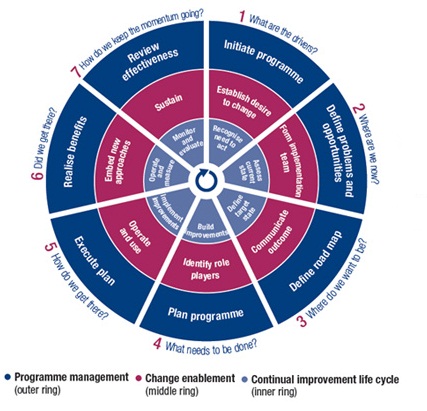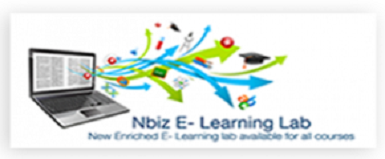Information Governance

Our Clint Rating: 4.7 Start Based on 25 users
Performance Management
Performance management reporting, including accurate, timely, and relevant portfolio, program, and IT project reports to senior management, provides a thorough review of the progress being made towards the identified objectives of the IT project. Through this review, the organization can assess IT performance in terms of which deliverables have been obtained, and what shortfalls need to be addressed. Performance metrics is a good way to get some of the data needed for performance.

- Protect and Secure your data and information – effective information governance paves the way to establish a set of rules, responsibilities, standards and regulations in handling data and information inside and outside the organization. This ensures that the organization’s valuable assets will maintain its confidentiality, integrity, availability, authenticity, utility and control.
- Better business intelligence – through information governance your organization will have fast usable, meaningful and effective access to historical data which can make the difference between an optimal decision and a haphazard guess. This will also ensure that confidentiality of critical information are maintained as the proper structure
- Improved Collaboration, Data Sharing and Decision-Making - Sharing and collaborating on data is integral to the success of modern businesses. This is what drives innovation and allows business leaders to make better decisions. An information governance strategy, when planned and implemented effectively, will help improve business innovation and decision-making by making data easier to share, work on, store and access when needed.
- Effective Risk management and Reduced Costs – information is what fuels every organization, proper information governance paves the way to managing the relevant risks effectively and at the same time allows cost reduction. Other related benefits to this are as follows:
- Increased productivity and reduced waste – with information easier to find employees can find what they need and produce the desired output, this means more business and better interactions
- Increased customer satisfaction - Customer-facing agents can quickly find any and all information about a customer and his or her transactions
- Greater regulatory, industry and organizational compliance - Gathering data for an audit can be done simply and efficiently
- Reduced legal costs - A fast and thorough e-discovery response cuts expenses and can increase the likelihood of a favorable settlement or ruling.

There are seven phases in COBIT implementation. At every phase one question will be answered and addressed.
Phase 1: What are the drivers? - This phase starts with recognizing and agreeing to the need for an implementation. It identifies the current pain points and triggers and creates a desire to change at executive management levels.
Phase 2: What are we now? This phase is focused on defining the scope of the implementation using COBIT’s mapping of enterprise goals to IT-related goals to the associated IT processes, and considering how risk scenarios could also highlight key processes on which to focus.
Phase 3: What do we want to be? In this phase, an improvement target is set, followed by a more detailed analysis using COBIT’s guidance to identify gaps and potential solutions. Some solutions may offer quick wins and others might be more challenging.
Phase 4: What needs to be done? This plans practical solutions by defining projects supported by justifiable business cases. A change plan for implementation is also developed
Phase 5: How do we get there? The proposed solutions are implemented into day-to-day practices in this phase. Measures can be defined and established using COBIT’s goals and metrics to ensure that business alignment is achieved and maintained and performance can be measured.
Phase 6: Did we get there? This phase focuses on the sustainable operation of the new or improved enablers and the monitoring of the achievement of expected benefits.
Phase 7: How do we keep the momentum going? In this phase, the overall success of the initiative is reviewed, further requirements for the governance or management of enterprise are identified and the need for continual improvement is reinforced.
Process Capability Assessment
Following the ISO/IEC 15504 this allows a more precise and repeatable assessment so that organizations will have a formal assessment of their current capabilities. ISO/IEC 15504 identifies the purpose as an activity that can be performed either as a process assessment or as a process improvement initiative
To continuously improve the enterprise’s effectiveness
To identify the strengths and weaknesses of selected processes based on business need
To provide a logical, understandable, repeatable, reliable and robust methodology for assessing the capability of IT-related processes listed below are the different capability levels:
- Level 0 – Incomplete Process – not implemented or has not been able to achieve the process purpose
- Level 1 – Performed process – Implemented process that achieves its process purpose
- Level 2 – Managed process – this is an implemented process that not only achieves its purpose but is also planned, monitored and adjusted with the products already established, controlled and maintained
- Level 3 – Established Process – this is a managed process that is now implemented using a defined process capable of achieving its process outcomes
- Level 4 – Predictable Process – this is an established process operating within defined limits to achieve process outcomes
Level 5 – Optimized Process – this is a predictable process that is continuously improving
Management Services (Initiation or Improvement) – NBIZ can provide you services that will allow you to initiate or improve your organization’s information governance. We can develop the policies, standards, procedures and improvements in compliance processes.
Delivery – we have a huge pool of consultants and industry practitioners that will enable your organization to do the following:
- design and production of retention schedules
- review governance structures for the introduction of information systems
- perform appropriate information security risk assessments and create cost efficient and effective risk treatment plans
- provide automation solutions
Compliance Audit and Processes Assessment - NBIZ has vast experience in ISO Standards and different frameworks. The level and scope can be customized depending on the organization’s current status and requirements. This could be for new organization who have just started and wants a progress check or established organizations who require a check on their progress and compliance. This may also be done are complete or partial assessments or a simple requirement for a third party to check the existing system. Below are some other benefits:
- provide assurance that key issues are identified and addressed
- provide management with a clear and concise understanding and visibility of the true priorities this will ensure that company resources especially your employees time and company budget are properly allocated and not wasted
- provide the organization with a proper risk mitigation plan that will empower the management to continue and ensure compliance
Training and Knowledge Transfer – we provide effective and top of the line trainings in COBIT 5, CGEIT etc.
- Resource Augmentation – NBIZ may also facilitate and assist in finding the appropriate resource personnel to meet your organization’s requirements.



 Special Offers
Special Offers
 GET OUR BEST DEALS!
GET OUR BEST DEALS!